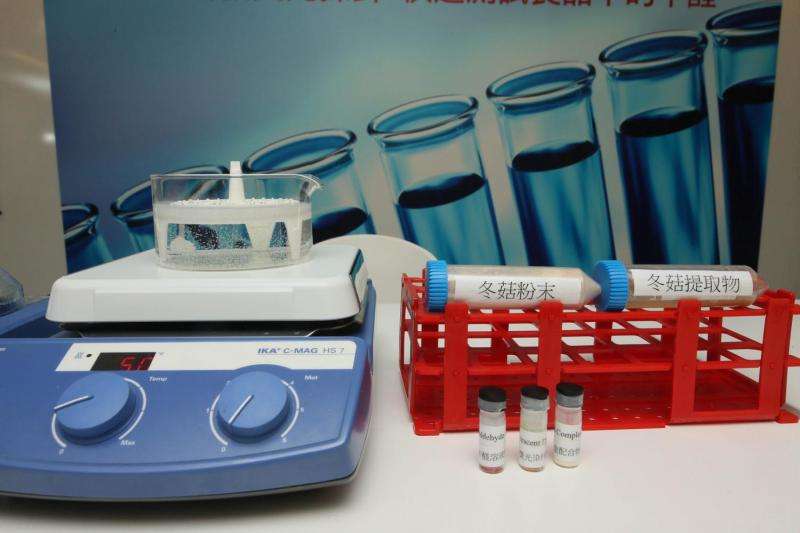Fluorescent probes for rapid detection of formaldehyde in food

In recent years, formaldehyde has been discovered to be illegally used in food processing for bleaching and preservation purposes, arousing health concerns by the general public. PolyU's highly selective formaldehyde rapid detection method involves only simple procedures. It can test 10 food samples on-site in one go in comparison to traditional methods which entail 30 minutes for the testing of each food sample one by one. Its cost is less than HK$30, which is 90% lower than traditional testing methods. If the food sample contains formaldehyde, under hand-held UV light, the fluorescent probes will appear to be fluorescent blue, which can be easily observed by naked eyes.
Traditional methods for formaldehyde measurement are liquid chromatography which involves chemical derivation of formaldehyde, chromatographic separation and instrumental analysis of the formaldehyde content with reference to the sample standard. However, these methods require expensive instruments, sophisticated operational skills, tedious sample preparation and time-consuming analysis. Given their low testing through-put, the testing of 10 food samples would require up to 5 hours (10 X 30 minutes), making these methods not suitable for on-site food safety inspection. In addition, the test results of formaldehyde testing kits available in the market are easily interfered by irrelevant substances. Their low selectivity and stability make them difficult to satisfy the on-site food safety inspection and high through-put needs of the industry and authorities.
Based on prior research on a chemical reaction that enables chemical coupling of 1) amine-functionalized resins, 2) formaldehyde and 3) fluorescent dyes via gold catalysis, PolyU researchers have developed fluorescent probes for rapid detection of formaldehyde in food with excellent selectivity and high stability. Firstly, researchers added pre-treated food samples, amine-functionalized resins, fluorescent dyes and gold catalysts into a container, and heated the solution at 50 oC for 1 hour. After that, organic solvents were added to wash out excessive reagents. The three-component coupling reaction will connect resin-linked sterically bulky amines and fluorescent alkynes through chemical bonding with formaldehyde in food so that the surface of the resins will give out fluorescent blue colour under hand-held UV light. One can easily detect the formaldehyde concentration by observing the brightness of the fluorescent colour by naked eyes. Not only is the design and operation of PolyU's invention simple, it does not require expensive instruments and sophisticated operational skills. It can test 10 food samples in one go, making it an ideal solution for on-site food safety inspection and front-line quality control. The research was conducted by ABCT in collaboration with Guangdong Entry-Exit Inspection and Quarantine Bureau.
The related paper has been recently published in Organic & Biomolecular Chemistry, a leading journal in Organic Chemistry. A joint PolyU-GDCIQ China patent has been filed. The research team will continue to enhance the formaldehyde rapid detection method, which include developing a new class of tunable fluorescent dyes and developing high through-put rapid detection formats.
Provided by Hong Kong Polytechnic University

















